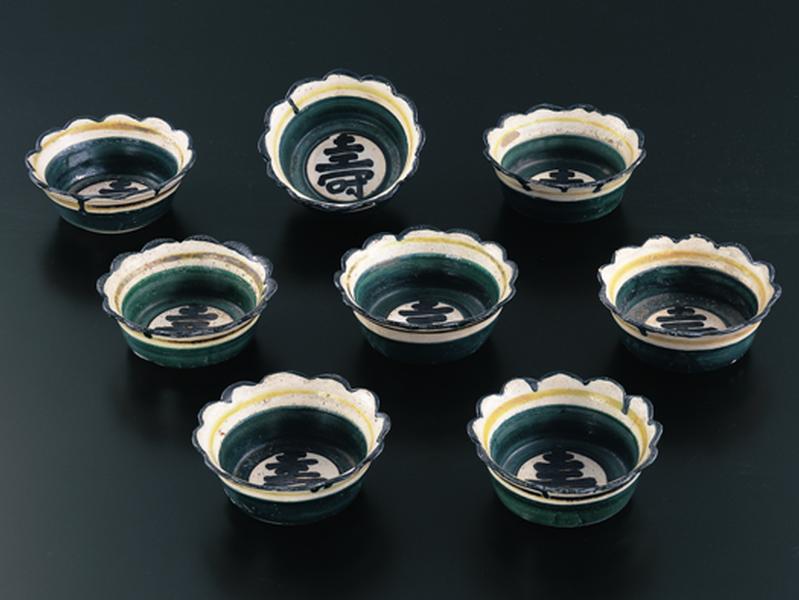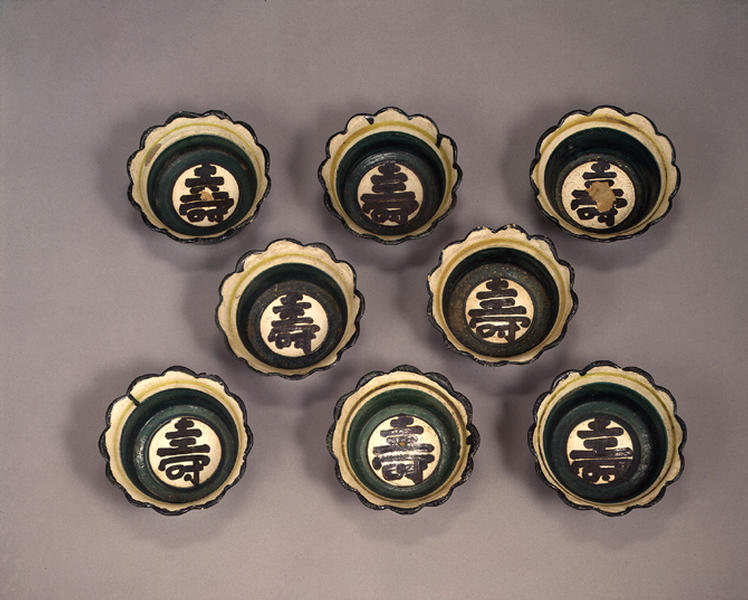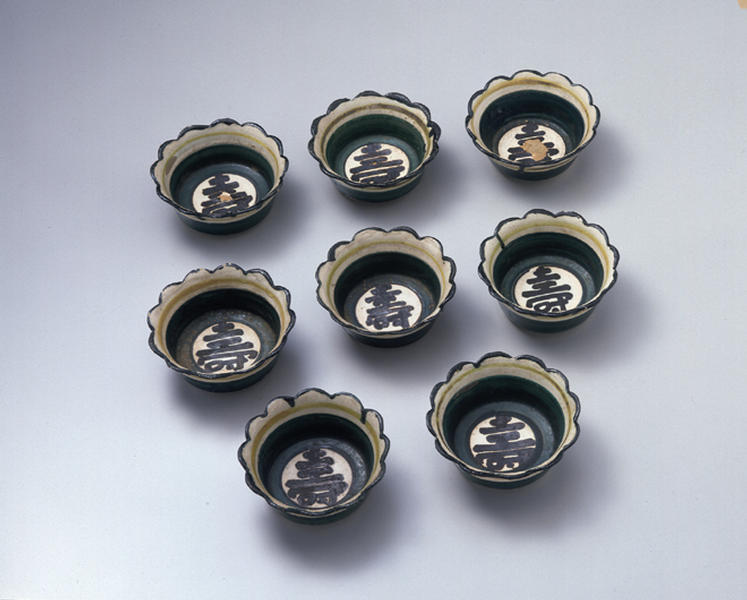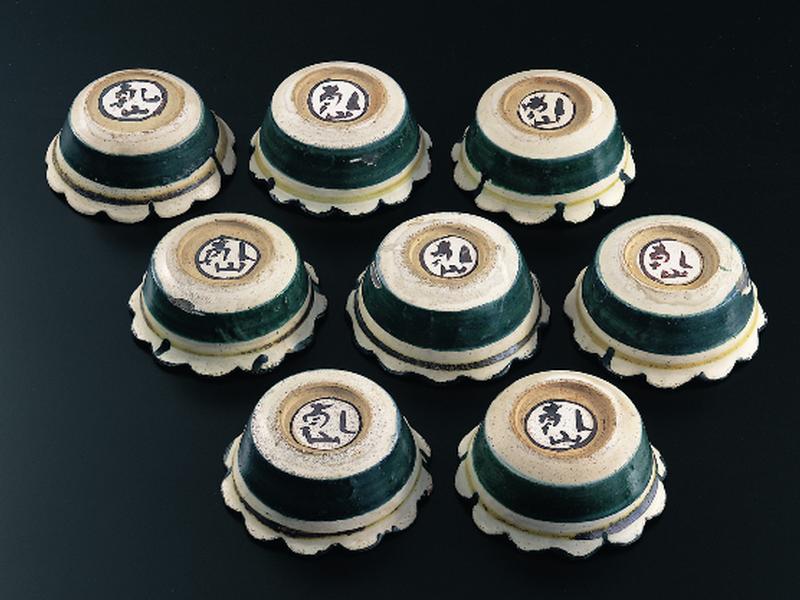Set of Circular Blossom-shaped Mukozuke Dishes with Japanese Kanji Design
- Kyoto
- Edo period
- 18th century
- Kenzan ware, underglaze and overglaze polychrome
- H-5.4 D-14
Catalogue Entry
Kenzan's artistic talents were unabashedly expressed in a large number of fine works during the period he lived in Narutaki. In Shotoku 2 (1712), in the thirteenth year of starting his own workshop, Kenzan moved his kiln to Nijo Chojiyamachi in downtown Kyoto. There were many reasons for this move, to be sure, but a major one might have been financial to meet the demand for his increasingly popular works. During this period, Kenzan used communal kilns at Gojo-zaka and elsewhere, and fired many kinds of tableware such as a particular type of ware called mukozuke, shown here. Basically, Kenzan's works were produced in a studio setting, where, for instance, tableware was formed, painted with designs, glazed, and finally fired by different expert craftsmen at each stage of the process. This is the reason why even the pieces in the same set differ slightly.
This set of mukozuke imitates a round flower blossom. A white glaze was applied to all surfaces, then a band of yellow around the upper part of the bowl. Below the yellow, a deep green band on the outside and another on the inside encircle the bowl. On the bottom of the inside, the character 壽, meaning "longevity," is written with iron underglaze. On the outside, in the flat of the shaved circular footing of the bowl, the name Kenzan is written with the same iron underglaze against the background of white glaze. The edge of each bowl's mouth is colored green, perhaps with an intention of tightening the whole design one of Kenzan's favorite techniques. The "longevity" design appears elsewhere, notably on a large bowl. It is possible that these pieces were produced in part to meet the demand for tableware with auspicious meanings.



